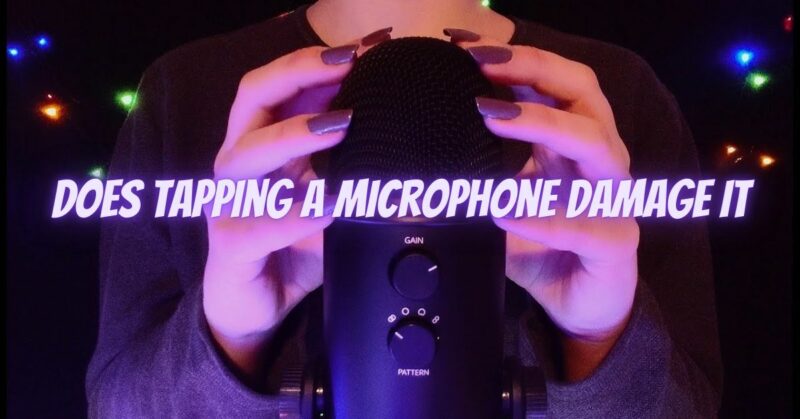Microphones are delicate and sensitive instruments designed to capture sound with precision. As such, it’s important to handle them with care to ensure optimal performance and longevity. Tapping or striking a microphone can potentially cause damage, affecting its functionality and audio quality. In this article, we will delve into the potential risks and consequences of tapping a microphone, shedding light on why it should be avoided to maintain the microphone’s integrity.
- Physical Damage to Internal Components:
Tapping or striking a microphone can lead to physical damage to its internal components. Microphones consist of delicate diaphragms, magnets, coils, and circuitry that work together to convert sound waves into electrical signals. Forceful tapping can displace or damage these components, resulting in altered sensitivity, distortion, or complete malfunction.
- Diaphragm Displacement or Misalignment:
The diaphragm is a crucial component of most microphones, responsible for converting sound waves into electrical signals. Tapping a microphone can displace or misalign the diaphragm, compromising its ability to accurately capture sound. This can result in reduced sensitivity, altered frequency response, and poor audio quality.
- Impaired Polar Pattern Consistency:
Microphones often have different polar patterns, such as cardioid, omnidirectional, or bidirectional, which determine their sound capture characteristics. Tapping a microphone can disrupt the delicate balance required to maintain the intended polar pattern, leading to inconsistent or distorted sound pickup. This can result in uneven audio distribution, affecting the microphone’s performance in various recording situations.
- Electrical Circuit Damage:
Microphones rely on sensitive electrical circuits to amplify and process audio signals. Tapping a microphone forcefully can cause electrical shocks or short circuits, potentially damaging the internal circuitry. This can lead to a loss of signal, increased noise, or even permanent failure of the microphone’s electronic components.
- Microphone Suspension and Shock Mount:
Many microphones are designed with built-in suspension or shock mount systems that minimize vibrations and handling noise. Tapping the microphone can disrupt these systems, rendering them less effective in isolating the microphone from external vibrations and impacts. This can result in increased handling noise and reduced overall sound quality.
Preventing Microphone Damage:
To preserve the integrity and longevity of your microphone, it is crucial to handle it with care and avoid tapping or striking it. Here are some guidelines to follow:
- Gentle Handling: Treat the microphone with care, avoiding any unnecessary impacts or physical contact that could potentially damage its internal components.
- Proper Mounting and Support: Use appropriate microphone stands, shock mounts, or suspension systems to secure the microphone and minimize handling noise. This provides additional protection against accidental impacts.
- Avoiding Excessive Vibrations: Keep the microphone away from sources of excessive vibrations, such as speakers, subwoofers, or other machinery that could transmit vibrations and potentially affect the microphone’s performance.
- Protective Storage: When not in use, store the microphone in a protective case or pouch to shield it from accidental impacts or mishandling.
Conclusion:
Tapping or striking a microphone poses potential risks to its internal components, functionality, and audio quality. The delicate nature of microphones requires careful handling and avoidance of any forceful impacts. By treating your microphone with the utmost care and following proper handling techniques, you can ensure its longevity, preserve its audio performance, and continue to capture pristine sound for your recording needs. Remember, prevention is key when it comes to maintaining the integrity of your microphone.


